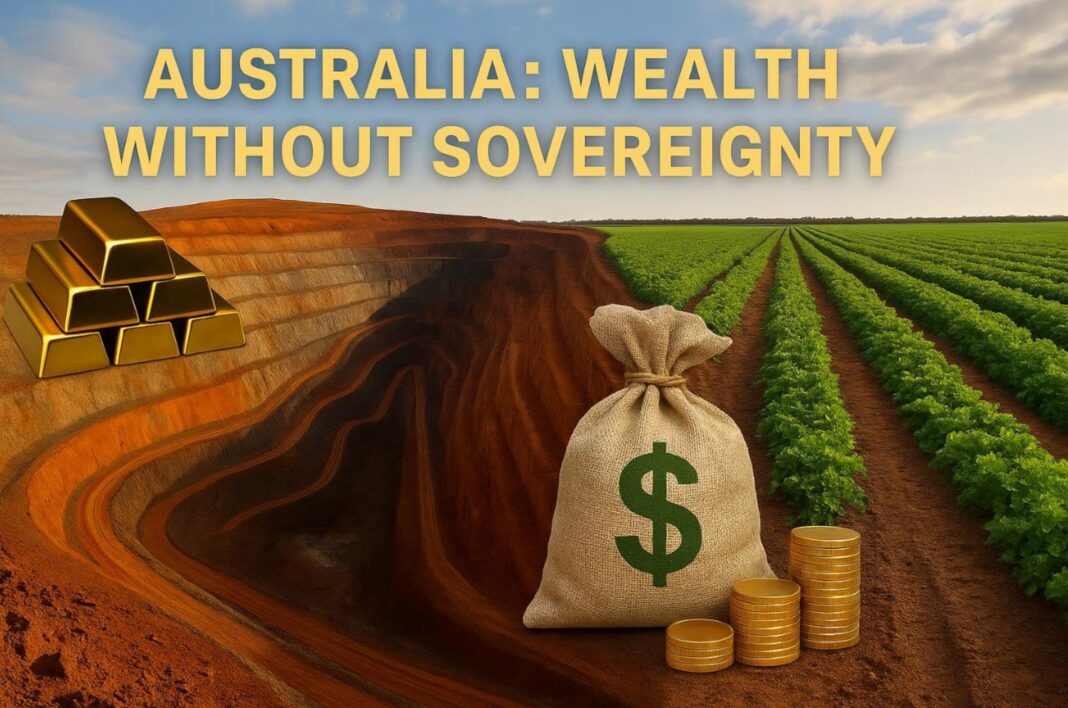On June 6th each year, Hindu communities across the world commemorate Hindu Samrajya Diwas — the coronation of Chhatrapati Shivaji Maharaj in 1674 at Raigad Fort. This was not merely a political event, but a civilisational declaration: that after 500 years of Islamic colonisation, a Hindu king could once again rule with dharma, dignity, and self-respect.

Coronation event of Chatrapati Shivaji, dated 6th June 1674
Australia, although far removed in geography but eerily parallel in its post-colonial trajectory, stands as a curious counterpoint to Shivaji’s vision. Despite its wealth in resources, education, and strategic geography, Australia remains heavily dependent on foreign powers, especially the United States and the United Kingdom. This article draws civilisational parallels between Hindu Swarajya and Australia’s unrealised sovereign potential.
The Civilisational Significance of Hindu Samrajya Diwas
Shivaji’s coronation was not a routine dynastic succession. It was a conscious revival of Hindu sovereignty, performed with Vedic rites officiated by Pandit Gaga Bhatt from Kashi. The event symbolised resistance not just against the Mughal Empire, but against the civilisational erosion of Hindu identity. Shivaji’s governance, temple restorations, and cultural patronage represented a renaissance of dharmic self-rule — a return of ‘Swarajya (Swa: Self; Rajya: Rule; meaning sovereignty)’ in the truest sense. [1]
Australia: Wealth Without Sovereignty
Australia, with 25 million people and a $2 trillion economy, is rich in natural resources, education, and geography. Yet, it remains dependent on the U.S. and U.K. for defense, and on global supply chains for critical technology. The ANZUS Treaty and AUKUS pact locked Australia into a strategic orbit that precludes independent doctrine. Advanced weapons, submarines, even AI and quantum ambitions are imported or aligned with NATO ecosystems.
Trade-wise, Australia is vulnerable. Recent tariffs by China (2019–2023) and the United States (2025) have disrupted exports, despite long-standing free trade deals. Australia exports lithium but imports batteries; sells uranium but doesn’t harness nuclear power. It has the muscle but not the autonomy. This mirrors the pre-Shivaji condition of India, when wealth existed but sovereignty had decayed under centuries of foreign rule or colonisation.
Civilisational Parallels: Shivaji and the Aboriginal Question
Like Shivaji’s India, Australia too has a civilisational core it has not reconciled with: its Indigenous people! Aboriginal Australians maintained spiritual sovereignty for 60,000 years before colonisation, much like Hindus retained ritual continuity under Islamic rule. Yet, modern Australia suppresses this foundational identity while importing strategic norms from former colonial powers.
A truly sovereign Australia would recognise and integrate this ancient civilisational memory into its national ethos — much like Shivaji did by reasserting Vedic rituals and native idioms.
Global Comparisons: What Sovereignty Looks Like
While Australia remained dependent, other less-developed countries pursued self-development with boldness:
- Turkey built drones and a defense industry despite NATO membership.
- Iran developed nuclear and satellite tech despite sanctions.
- India, poorer than Australia in 1950s, now has sovereign digital ID, nuclear submarines, and a lunar program.
- China became the world’s second-largest economy by processing its own resources and
asserting strategic autonomy.
Each of these nations invested in their civilisational identity and technological sovereignty. Australia, by contrast, chose comfort and loyalty over ambition and leadership.
Conclusion: Sovereignty Must Be Claimed
Hindu Samrajya Diwas reminds us that sovereignty begins not with declarations, but with civilisational resolve. Shivaji refused to serve alien powers; he built forts, restored temples, and rewrote destiny. Australia, despite its resources and stability, remains a strategic and technological client of larger empires.
From Raigad to Canberra, the lesson is clear: real freedom demands cultural clarity, technological investment, and the courage to lead. Until Australia finds its own Raigad moment, it may remain prosperous, but never truly sovereign.
References:
- Swarajya Magazine – Celebrating 350 Years Since Shivaji Maharaj’s Coronation:
https://swarajyamag.com/announcements/celebrating-350-years-since-shivaji-maharajscoronation - Office of the historian – The Australia, New Zealand and United States Security Treaty (ANZUS Treaty), 1951. Available from: https://history.state.gov/milestones/1945-1952/anzus#:~:text=The%20Australia%2C%20New%20Zealand%20and%20United%20States%20Security%20Treaty%2C%20or,security%20relationship%20between%20their%20countries
- BBC News – Australia nuclear submarine deal: https://www.bbc.com/news/world-australia64945819
- Australian Strategic Policy Institute – https://www.aspi.org.au/
- ABC News – Australia-China trade tensions: https://www.abc.net.au/news/2020-12-17/australian-trade-tension-sanctions-china-growing-commodities/12984218
- Export Finance Australia: U.S. Tariff Impact – https://www.exportfinance.gov.au/resources/world-riskdevelopments/2025/march/australia-us-tariffs-take-effect-diversified-exports-insulateeconomy
- Business Council of Australia – Seizing the Moment: How Australia Can Create a More Dynamic and Competitive Economy: https://www.bca.com.au/seize_the_moment#:~:text=The%20BCA%20believes%20that%20achieving,to%20the%20broader%20Australian%20community
- OECD R&D statistics – https://data.oecd.org/rd/gross-domestic-spending-on-r-d.htm




